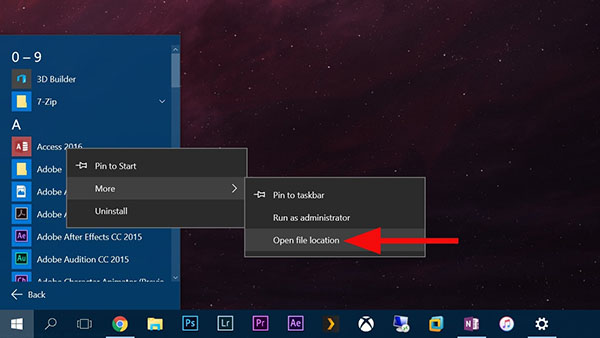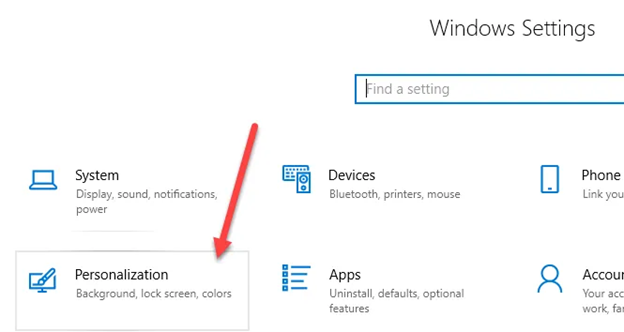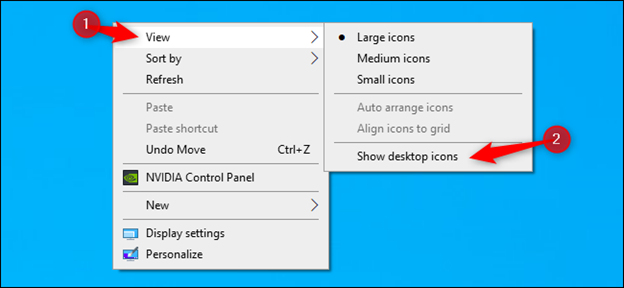How To Hide Apps On Windows 10?
Would you like to hide certain apps on your Windows 10 computer? Many users might have reasons not to want certain apps on the desktop. Now, you can easily hide apps from showing on the Windows 10 desktop in this guide.
In Windows 10, there are 2 general classifications of apps: the traditional/desktop apps and universal apps. The traditional apps are those being installed on the computer. The universal apps are those considered compatible with other Microsoft platforms such as Xbox, Windows smartphones, and Windows tablets, and they are downloadable from the Microsoft Store.

As you continue to use your Windows, you will notice an increase in disorganization on your desktop and Start Menu. To resolve this, you can opt to hide those unnecessary shortcuts while also serving the purpose of restricting unwanted access by other users.
The following methods stated below are ways to remove apps from the Start Menu list, editing which are suitable to be displayed, or just the plain old hiding trick. This can only work on traditional/desktop apps. For universal apps, hiding them is impossible but removing them is easy and less bothersome since they are conveniently re-downloadable.
Removal Of Apps In The All Apps List
- Click ‘Start’ and then select ‘All Apps.’ Locate the app you want to remove from the list.
- Right-click on the app’s icon, choose ‘More,’ and then select ‘Open File Location.’

- The File Explorer window will open and show you the app’s shortcut. Here, you will delete the shortcut. Deleting it will not result in uninstallation. It will just be removed from the All Apps list.
- Repeat the steps if you want to remove another app from the All Apps list.
Choosing The Apps To Be Displayed In Start Menu
- If you want to choose certain apps to be the only ones appearing in your Start Menu, you can customize it. First, click ‘Start.’
- Select ‘Settings.’
- Select ‘Personalization,’ and then, you are free to make adjustments to the settings.

- To remove the ‘middle section’ of the list of programs and apps, you can toggle off the option ‘Show app list in the Start menu.’
- Selecting ‘Show most used apps’ will display only the most accessed or opened apps below the apps that are just recently added.
- To hide recently opened files when you right-click on the app icon on the taskbar, make sure to disable the ‘Show recently opened items’ by toggling off in the ‘Jump List’ option of the Start Menu or taskbar.
- If you want to customize the list of apps appearing on the Start menu, click the option ‘Choose which folders appear on Start link.’ From there, you can just toggle on the items you want to be displayed and toggle off the items you don’t want to.

Showing A Clean Desktop
- In order to hide or unhide the icons on your desktop, just right-click on any empty space of your desktop screen.
- Select the option ‘View’ and then select ‘Show Desktop Icons.’ This will toggle the desktop icons to show or hide. To re-display the desktop icons, you will just repeat the same process.

Hiding An Icon
- To hide a particular app shortcut from the desktop or in the File Explorer window, right-click on the app shortcut or folder.
- Select the option ‘Properties.’
- Look for the checkbox on the dialog box where there is the word ‘Hidden’ right next to it. Check the box.
- Click ‘OK’ afterward.
- In order for a certain file to stay hidden, make sure you disable the Showing hidden files option from the File Explorer menu.
Summary: Hide apps on Windows 10
- Press windows key and type "windows features".
- Click windows features on the left.
- Scroll down to Media Features and uncheck Windows Media Player to turn it off.
- You should no longer see the application icon for it in the start menu or apps list.
Conclusion
Hiding apps can be useful in order to prevent accidental access from unauthorized persons. Make sure to remember that you have hidden them, or you might be stuck wondering why your storage is running low.